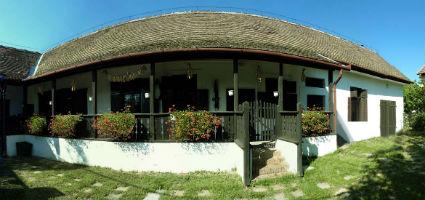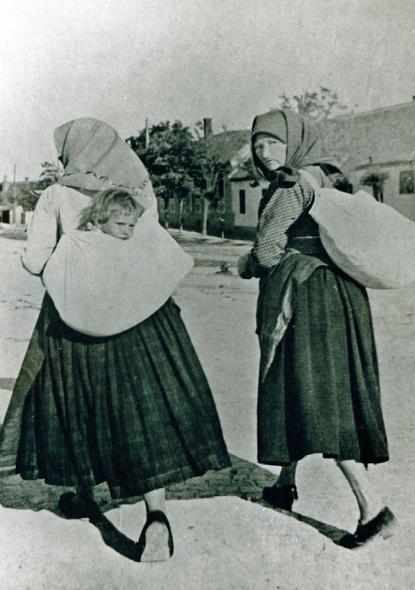2025. August 2. Saturday
Jakab Bleyer Region Historical Collection - Budaörs
 |
Address: 2040, Budaörs Budapesti út 47/1
Phone number: (23) 440-217
E-mail: info@heimatmuseum.hu
Opening hours: Tue-Sat 14-18, Sun 10-14
|
The exhibition has closed for visitors.
2012.01.19. - 2012.06.30.
The body of the exhibition is baby carrier shawls from trousseaus belonging to Catholic women of German minorities, living in the Mohács region. All the shawls were made by women from Baranya.

After Germans were settled in the Mohács region, Hungary in the 18th century, textiles were made by male weavers. In villages, there was one man selected of all the weavers to make the white stripy carrier shawls. We also show some of the wrap carrier shawls. Their origin is not knows, supposedly they were originally used as bedcovers.
Carrier shawls were considered one's valuable, playing a two-fold role: casual and ritual. After the baby was out of the crib, the mother carried her/him to the priest in a shawl. After blessing, purified, she could take part in village life and could also take her baby with her.
Shortly after birth, the 'impure' mother and her infant was in bed, resting, railed off from the village community. Most of the things around them were to guard them, e.g. guarded from having the mother’s milk taken away etc. Rites of purification and acceptance were held to prepare the mother's return to the community. The period full of danger was considered until the baptising of the baby, and the inauguration of the mother. It meant the end of bed-rest.
We show textiles in relation to the confinement of the mother to bed, we also show some of the rites in connection with childbirth. Items did not necessarily match in a village to another, unfortunately, we cannot show all variations.
In another room, the visitors will find out customs related to how women in the Catholic German minority in Budaörs used bundle table cloths and veils in cribs. In two footages, two women from Budaörs reveal how they lived in the past, when they carried their load and their babies in bundles.
You can find out everything about the exhibition at: (www.heimatmuseum.hu) .

After Germans were settled in the Mohács region, Hungary in the 18th century, textiles were made by male weavers. In villages, there was one man selected of all the weavers to make the white stripy carrier shawls. We also show some of the wrap carrier shawls. Their origin is not knows, supposedly they were originally used as bedcovers.
Carrier shawls were considered one's valuable, playing a two-fold role: casual and ritual. After the baby was out of the crib, the mother carried her/him to the priest in a shawl. After blessing, purified, she could take part in village life and could also take her baby with her.
Shortly after birth, the 'impure' mother and her infant was in bed, resting, railed off from the village community. Most of the things around them were to guard them, e.g. guarded from having the mother’s milk taken away etc. Rites of purification and acceptance were held to prepare the mother's return to the community. The period full of danger was considered until the baptising of the baby, and the inauguration of the mother. It meant the end of bed-rest.
We show textiles in relation to the confinement of the mother to bed, we also show some of the rites in connection with childbirth. Items did not necessarily match in a village to another, unfortunately, we cannot show all variations.
In another room, the visitors will find out customs related to how women in the Catholic German minority in Budaörs used bundle table cloths and veils in cribs. In two footages, two women from Budaörs reveal how they lived in the past, when they carried their load and their babies in bundles.
You can find out everything about the exhibition at: (www.heimatmuseum.hu) .
